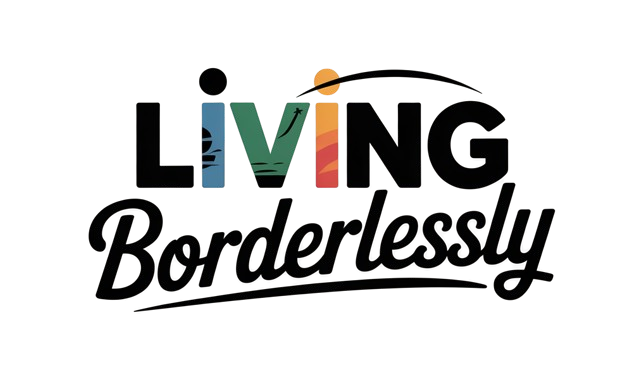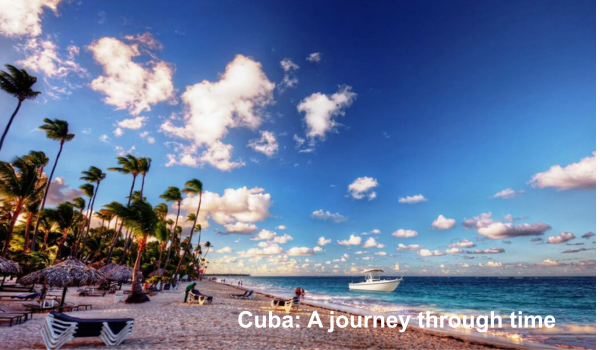Livingborderlessly
Archives
Cuba: A Journey Through Time on a Budget in 2025
SIGN UP FOR OUR NEWSLETTER
Cuba on a Budget: A Journey Through Time Without Breaking the Bank |
The whispers are true: you can explore the timeless allure of Cuba affordably. From staying in private homes to mastering local transport, here is how to experience the island’s magic like a true insider. |
Havana’s faded grandeur, the rhythmic pulse of Santiago’s music scene, and the pristine tobacco fields of Viñales—these are not experiences reserved for the wealthy.
Despite persistent rumors of high costs, a journey through Cuba can be surprisingly affordable if you sidestep the tourist traps and embrace the local way of life.
The key is knowing how to navigate its unique economic landscape.
While the island faces economic headwinds and a notable downturn in tourism, this has created a complex environment for travelers where smart choices can lead to significant savings and a more authentic adventure.
Navigating the New Currency Reality
The dual-currency system that once confused visitors is officially over.
The Cuban Peso (CUP) is now the sole official currency, but the story on the street is much different.
Hard currencies, especially U.S. dollars and Euros, are overwhelmingly preferred in the private sector.
Bringing a sufficient amount of cash in small denominations of USD or EUR is absolutely essential, as U.S. credit and debit cards do not work, and ATMs are unreliable for foreign cards.
You will find that many private businesses, from restaurants to taxi drivers, will offer you better value if you pay directly in foreign currency rather than exchanging for a large amount of CUP at the official, less favorable government rate.
Your Home Away From Home: The Casa Particular
The single best way to save money and immerse yourself in Cuban culture is by staying in casas particulares.
These are privately-owned homes licensed to rent rooms to foreigners, offering a glimpse into the daily lives of Cuban families.
A room in a casa can cost anywhere from $20 to $50 per night, a fraction of the price of state-run hotels, and almost always includes better service and a personal touch.
Most hosts offer delicious, home-cooked breakfasts for around $5 and dinners for $10-$15, which are often the best and most cost-effective meals you'll find.
Booking your first few nights in advance online is wise, but you can also find them simply by looking for the distinctive blue anchor sign on doorways throughout the island.
Getting Around Like a Local
Transportation costs can quickly add up if you rely on private tourist taxis.
For long-distance travel, the Viazul bus network is the most reliable and budget-friendly option for tourists, connecting all major cities and tourist destinations.
It is crucial to book Viazul tickets several days in advance, especially during peak season, as popular routes sell out quickly.
For shorter trips between cities, look for colectivos, or shared taxis, which are often cheaper and faster than the bus.
Within cities like Havana and Trinidad, exploring on foot is a joy, but for longer distances, bici-taxis (bicycle rickshaws) offer a cheap and fun way to get around.
Eating Well Without Overspending
Food in Cuba can be incredibly cheap if you know where to look.
Avoid the polished tourist restaurants in central squares and instead seek out paladares—small, privately-owned restaurants—a few blocks away.
Street food is another fantastic budget option, with peso pizzas and fresh fruit juices available for less than a dollar.
As mentioned, eating at your casa particular is often the best deal, providing hearty, authentic Cuban meals at a very reasonable price.
This not only saves money but directly supports your host family.
Understanding Entry Requirements
For most non-U.S. travelers, entering Cuba is straightforward, requiring a valid passport and a tourist card (visa), which can often be purchased from your airline.
For U.S. citizens, travel is more regulated.
While tourism is technically prohibited, Americans can legally visit under one of 12 authorized travel categories, with "Support for the Cuban People" being the most common for independent travelers.
This category requires you to maintain a full-time schedule of activities that support the local population, such as staying in casas particulares, eating at private restaurants, and engaging with local artists and entrepreneurs.
It's a mandate that beautifully aligns with the principles of budget travel.
Travelers must also complete the D'Viajeros online form before arrival and, as of recently, may need to apply for an electronic visa in advance, so checking the latest requirements is essential.
Cuba remains a destination where time seems to stand still, a place of profound beauty, resilience, and cultural richness.
By traveling thoughtfully and embracing the local economy, you can unlock its secrets without draining your wallet, creating memories that are truly priceless.
FAQ: Cuba Budget Travel
What is a realistic daily budget for Cuba?
A backpacker can get by on as little as $30-$40 per day, while a mid-range traveler might spend between $60-$100 per day. This covers a stay in a casa particular, local transport, food from paladares or your casa, and some activities.
Is it safe to exchange money on the informal market?
While the informal market offers a much better exchange rate for CUP, it comes with risks like counterfeit bills. It is safest to rely on paying directly with USD or EUR at private businesses or exchanging small amounts through a trusted source, like your casa particular host.
How do I travel under "Support for the Cuban People"?
You must have a full itinerary of activities that involve meaningful interaction with Cuban people and support private businesses. This means avoiding state-run hotels and restaurants. Keep records and receipts of your spending to demonstrate compliance if ever required. |


